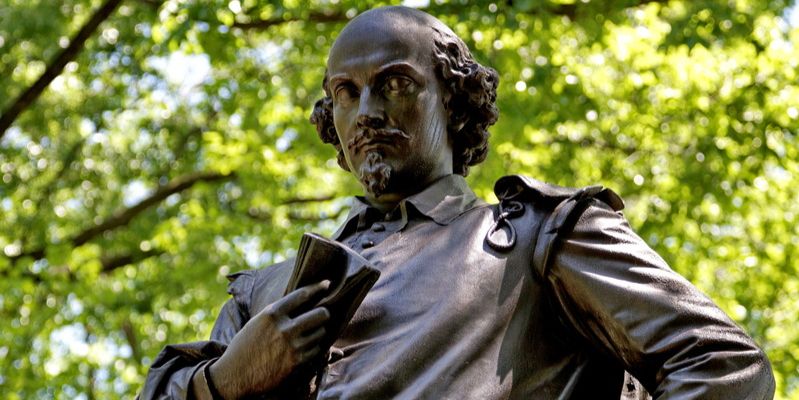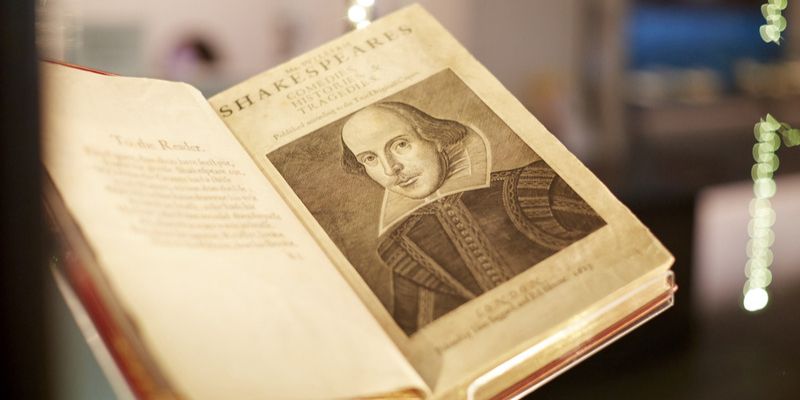
New research has cast fresh doubt on the origins of one of the most famous insults aimed at William Shakespeare, pointing the finger at a friend of the Bard.
The phrase ‘upstart crow’ has long been seen as the first literary dig at Shakespeare’s rising fame, appearing in Greene’s Groatsworth of Wit, a pamphlet published in 1592 shortly after the death of its purported author, Robert Greene.
The insult portrays Shakespeare as a presumptuous actor-turned-playwright ‘beautified with our feathers’ – a line that has shaped centuries of thinking about the Bard’s early career and his relationships with fellow writers.
But new research by Professor Brett Greatley-Hirsch of the University of Leeds School of English, working with Professor Andrew Hadfield at the University of Sussex and Dr Rachel White at Durham University, suggests a different author was behind the notorious attack: Thomas Nashe.
Another Elizabethan playwright and pamphleteer, Nashe was known for his sharp wit, controversy-stirring prose, and possible collaboration with Shakespeare himself.
This discovery reshapes what we think we know about Shakespeare’s early reception and the literary rivalries of Renaissance London.
Drawing on a combination of close textual analysis and computational methods more commonly used in the sciences, Professor Greatley-Hirsch and his team re-examined the authorship of Greene’s Groatsworth of Wit, which scholars have long debated.
While it’s acknowledged that Greene did not write the final version of the pamphlet – which was compiled posthumously by his literary executor Henry Chettle – these new findings suggest that Chettle worked in collaboration with Nashe, who may have mischievously penned the ‘upstart crow’ lines.
If so, the insult gains a new layer of intrigue: Nashe has been identified as a co-author of Henry VI, Part One, meaning Shakespeare may have worked with the very person who helped undermine his reputation.
“This discovery reshapes what we think we know about Shakespeare’s early reception and the literary rivalries of Renaissance London,” said Professor Greatley-Hirsch, a world leader in computational Shakespeare studies.
“It also highlights the power of digital tools to shed new light on longstanding literary puzzles – helping us to ask, and answer, questions that were previously out of reach. By using machine learning in this way, we are getting the computer to spot things that an ordinary human being simply can’t.”
What we don’t know is whether Nashe was genuinely scornful of Shakespeare, dismissing him as a second-rate imitator, or whether he was stirring up controversy because it sells.
There had long been questions over the pamphlet’s authorship with academics including the renowned Shakespeare scholar Professor Katherine Duncan-Jones suggesting that Nashe may be behind parts of it.
The team’s fresh analysis now backs up this theory. Dr White added: “We have provided quantitative support to Professor Duncan-Jones’s qualitative judgement, as a careful scholar and sensitive reader of Shakespeare, that the ‘upstart Crow’ lines sound more like the work of Nashe. This part of the Groatsworth captures Nashe’s style, tone, and language perfectly, making it unlikely that this is imitation.”
Even with the hard evidence in favour of Nashe as the author, mystery still surrounds why Nashe would have hit out publicly in this way. He and Shakespeare are thought either to have collaborated on 1 Henry VI, or that Shakespeare revised Nashe’s earlier work.
Professor Hadfield said, “What we don’t know is whether Nashe was genuinely scornful of Shakespeare, dismissing him as a second-rate imitator, or whether he was stirring up controversy because it sells. Nashe liked taking on different identities in his writing and to play games about authorship, which may be what is happening here.”

Professor Greatley-Hirsch added: “Nashe was adamant that he had nothing to do with the Groatsworth, but he was also a trickster, so this kind of stunt certainly fits with his character.
“He was one of the so-called ‘university wits’ thought to have looked down on Shakespeare who had a provincial education and had not been to university.”
The research is published in the latest issue of Shakespeare Quarterly, a leading international journal for Shakespeare studies.
Further information
- The research used distance metrics and machine learning methods to analyse the use of “function” words (i.e., simple words like “a” or “the” which are used extensively in any writing) as well as less ubiquitous “lexical” words. It mapped the distribution of these words through the text, comparing with known examples of the writers’ work to provide an estimate of the closest match and likely authorship.
- Upstart Crows and Red Herrings: Thomas Nashe and Greene’s Groatsworth of Wit is published in Shakespeare Quarterly, 3 June 2025. A copy of the full article is available on request.
- For more information or to arrange an interview, please contact University of Leeds media officer Victoria Prest via email on pressoffice@leeds.ac.uk.
- Main image: Adobe Stock 53549102